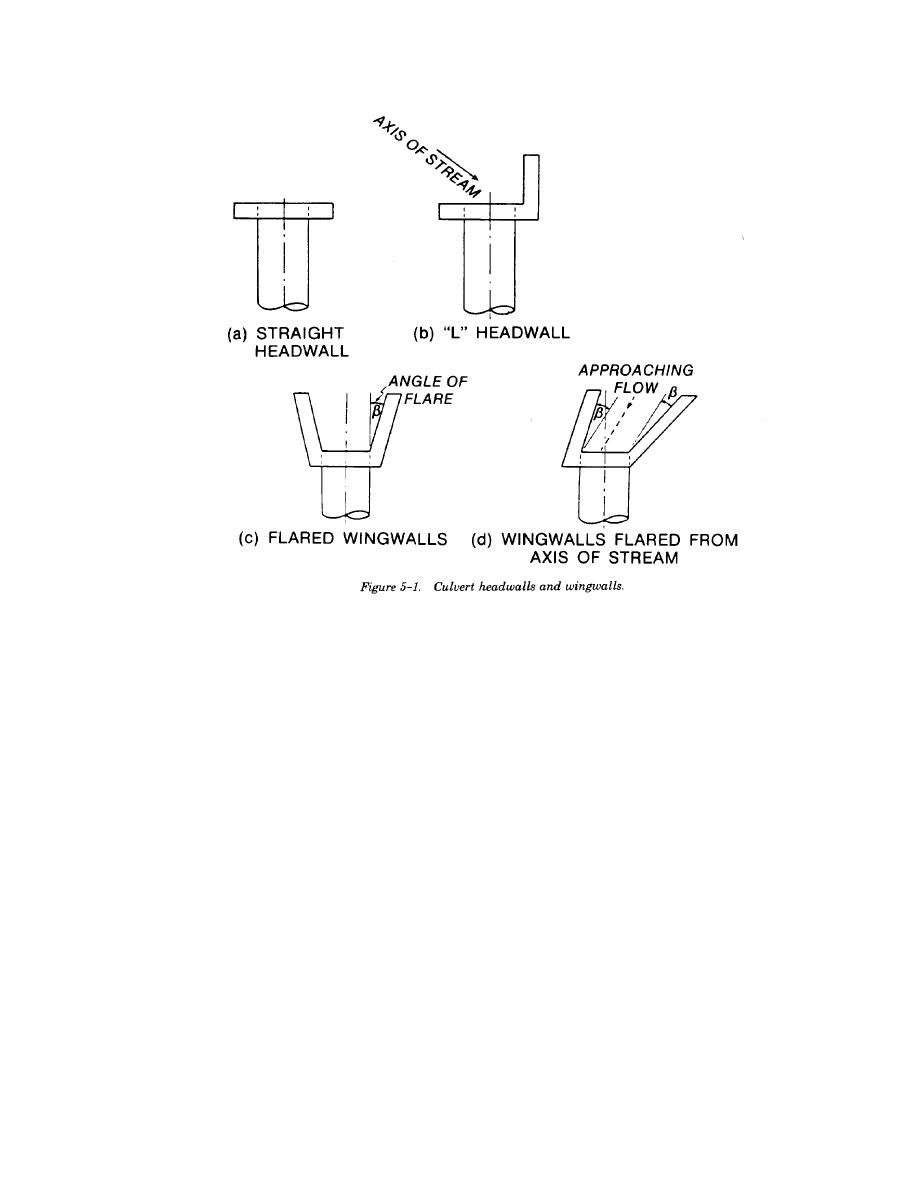
TM 5-820-3/AFM 88-5, Chap. 3
f. Headwalls are normally constructed of plain
unless justifiable as an integral part of outfall
or reinforced concrete or of masonry and usually
energy dissipators or erosion protection works, or
consist of either a straight headwall or a headwall
for reasons such as right-of-way restrictions and
with wingwalls, apron, and cutoff wall, as required
occasionally aesthetics.
by local conditions. Definite design criteria appli-
(2) The system will fail if there is inadequate
cable to all conditions cannot be formulated, but
endwall protection. Normally the end sections may
the following comments highlight features which
be damaged first, thus causing flow obstruction and
require careful consideration to ensure an efficient
progressive undercutting during high runoff periods
headwall structure.
which will cause washout of the structure. For
(1) Most culverts outfall into a waterway of
corrugated metal (pipe or arch) culvert instal-
relatively large cross section; only moderate tail-
lations, the use of prefabricated end sections may
water is present, and except for local acceleration,
prove desirable and economically feasible. When a
if the culvert effluent freely drops, the downstream
metal culvert outfall projects from an embankment
velocities gradually diminish. In such situations the
fill at a substantial height above natural ground,
primary problem is not one of hydraulics but is
either a cantilevered free outfall pipe or a pipe
usually the protection of the outfall against
downspout will probably be required. In either case
undermining bottom scour, damaging lateral
the need for additional erosion protection requires
erosion, and perhaps degrading the downstream
consideration.
g. Headwalls and endwalls incorporating various
channel. The presence of tailwater higher than the
culvert crown will affect the culvert performance
designs of energy dissipators, flared transitions, and
and may possibly require protection of the adjacent
erosion protection for culvert outfalls are discussed
embankment against wave or eddy scour. In any
in detail in subsequent sections of this chapter.
h. Headwalls or endwalls will be adequate to
event, a determination must be made about
downstream control, its relative permanence, and
withstand soil and hydrostatic pressures. In areas of
tailwater conditions likely to result. Endwalls
seasonal freezing the structure will also be designed
(outfall headwalls) and wingwalls will not be used
to preclude detrimental heave or lateral
5-2


 Previous Page
Previous Page
